TV buying guide: 10 key factors to keep in mind for your new television
Buying a TV is not an everyday affair. Given that televisions typically last us for far longer than the average lifespan of a smartphone, TV buying requires you to take a lot of future plans into account. Beyond simply your plans that could include upgrading your house, factors such as upgrades to video streaming, content and standards of screen resolutions ensure that the TV buying process can quickly become a complicated affair. It is this that our TV buying guide looks to resolve.
Through clever strategising based on your room size, TV viewing pattern, preferred content and a host of other factors, our TV buying guide will seek to narrow down the list of TVs that you may wish to consider for your home to a final few. Choosing the right television, therefore, will include prioritising a set of features that could define the set of essential benefits that your TV can deliver – while leaving out features that you may never really use or access.
It will also need you to account for the fact that the set of accessories that you use with your TV today – such as gaming consoles and audio enhancements – will only grow over time, or support only the latest standards in the long run. On this note, we take a look at some of the best TVs that you can buy in India today, and also list down the entire set of features that you must prioritise upon, when you buy your next TV.
List of best 4K TVs in India right now
|
Name |
Price |
|
Samsung Crystal 4K Pro 43″ |
Rs 38,990 |
|
Mi TV 4X 55″ |
Rs 44,999 |
|
OnePlus U1s 50″ |
Rs 40,999 |
|
OnePlus Q1 55″ QLED |
Rs 69,899 |
|
LG NanoCell Cinema 55″ |
Rs 65,999 |
|
TCL P7 65″ |
Rs 69,990 |
|
Samsung The Frame 50″ QLED |
Rs 73,990 |
|
Samsung The Serif 55″ QLED |
Rs 89,990 |
|
LG A1 OLED 55″ |
Rs 1,04,000 |
|
Sony A8H OLED 65″ |
Rs 2,37,490 |
What your TV should have
With the above order of 4K televisions at hand, what you get are a range of TV technologies – from essential LEDs, to quantum LEDs, LG’s NanoCell, and the class-leading range of OLEDs as well. However, going beyond simply the display technologies at hand, each of these televisions offer image upscaling, a range of inputs to connect your favourite accessories through, and a host of other features that you would realise are increasingly important over time. With this in mind, here’s looking at 10 key features that you must consider, when you buy your next TV.
Always look for acclaimed image upscaling tech
Image upscaling are proprietary technologies offered by television manufacturers, which use software algorithms at their core. The tech involves using the input picture quality or image signal, assessing its overall quality, and using artificial intelligence and smart algorithms to upgrade this picture quality to match the highest possible quality that your TV can natively play. This can be crucial in today’s age, since most algorithms can help upscale full HD content streams from popular service providers to match the 4K screen resolution of televisions.
Good image upscaling technologies in TVs, such as Sony’s Bravia X-Reality Pro, and LG and Samsung’s AI 4K upscaling, each offer performance that gives you viewing quality as close to 4K as you can get. When you buy your next TV, ensure that you go through the product brochure to first understand the image upscaling technology that your TV comes with. Given that proliferation of 4K video content has been steadily on the rise, prioritising on image upscaling will ensure that no matter what content you watch, you would mostly get the best video quality that your 4K TV can provide at any time.
This also ensures that you do not need to frequently upgrade your TV, since a good 4K image upscaler on a TV will also ensure that your TV can produce visuals at peak quality for a longer number of years. Since video streaming quality takes longer to evolve and catch up with screen resolutions, having a TV with good upscaling will make sure that you can use your TV for much longer – than if you buy one without good upscaling.
Look for higher refresh rates
One of the most essential metrics for any display is its refresh rate, and this is no different for TVs either. However, the matter is a little more complicated for TVs. Before we get into this, it is important to understand what refresh rates are, and why they are important.
The refresh rate, simply put, is the number of times that the screen of your television switches on and off in one second. This on-off cycle happens due to the power supply – the alternating current supply always happens in cycles. As a result, in India, you will find that the refresh rate of a display is always measured in multiples of 30 cycles per second, measured in Hertz (Hz) – the unit of frequency.
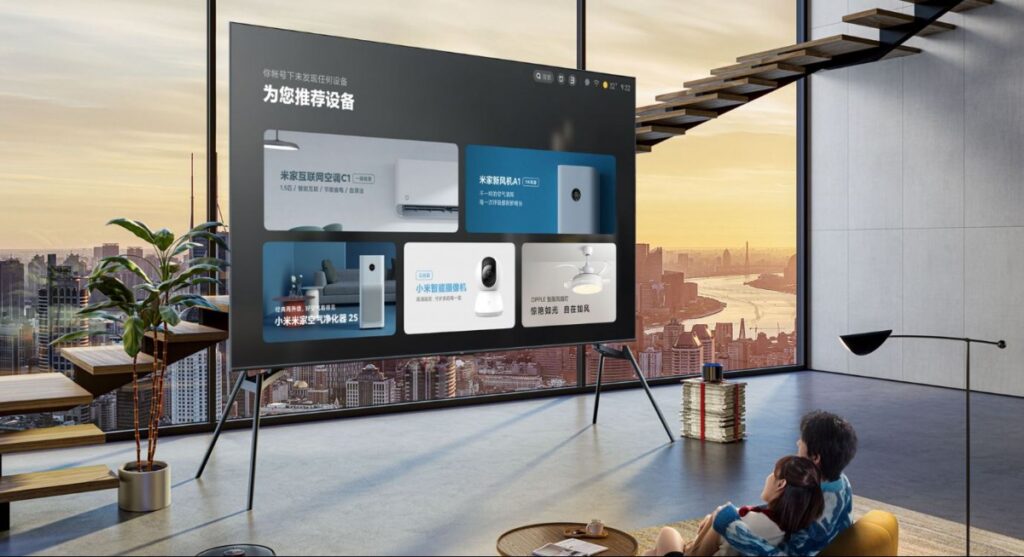
In a large number of budget televisions, you will often find that despite content being offered in 4K resolution, the refresh rate of the TV’s screen will be limited to 30Hz. This could be severely detrimental towards your viewing experience, since 30Hz is a frequency that human eyes can still register. As a result, you will feel as if your screen is stuttering – and this can totally ruin the experience of watching 4K content. Hence, always ensure that the TV that you purchase offers at least 60Hz refresh rate – which is also something that any 4K TV worth its reputation should provide.
A number of TVs today also offer 120Hz refresh rate, but such TVs are typically expensive and are placed in the more premium range. If you do have the budget for it, do opt for these to ensure that your purchase is even more future-proof.
Choose your screen size as per your room
What many of us get wrong is to assume that larger the screen size, the better the experience of watching television would be. This, however, is clearly a myth – putting an oversized television in a small room would mean that you may end up with frequent headaches. The screen brightness and colours would start feeling too sharp, and the overall set of images on your television would start feeling overbearing.
Similarly, buying a TV that is too small for your room would also ruin the experience. This would then become only a functional purchase, something that would not really let you enjoy the content – but see it as a last-ditch option. The reason behind this is the coverage area of a TV screen with reference to human eyes.

With human eyes, if a television covers most of your line of sight while leaving out only the peripheral vision (or the corner of your eyes), this would make for the perfect screen size. The reason for this lies in the fact that peripheral vision helps the involuntary reflexes of the human brain, and therefore does not create stress upon the conscious mind.
With this in mind, ensure that the TV you purchase is just the right size for your room. For instance, a screen size of at least 50 inches would be necessary, if you sit at least 12 feet away from where your TV is. If you sit within 6 feet of where your TV is placed, you can purchase a smaller, 43 inch TV – which is something that would suffice for small rooms.
Connectivity ports and features are very important
Since we have repeatedly spoken about the importance of accessories being connected to TVs, it should come as no surprise that connectivity ports are of very high significance to a television. Before you start looking at any further details on your next TV, look towards the rear end of your TV, and look for the panel where all the inputs and ports are situated. Sometimes, these ports panels are broken down into two parts.
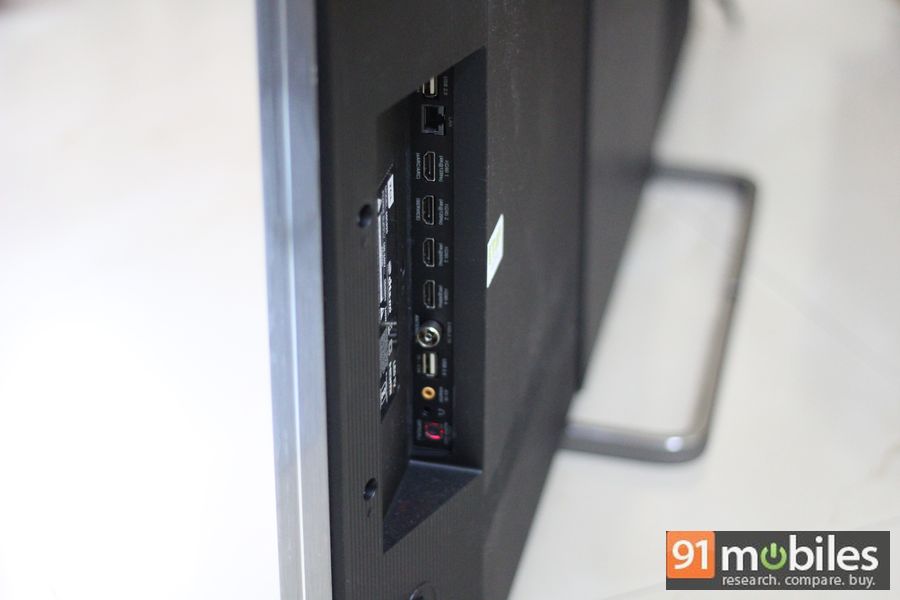
First, ensure that the panels of inputs are placed strategically enough to make ingress and egress an easy process. Next, look through all the ports and see if you have enough to suffice for a speaker setup, a gaming console and a streaming stick to connect to your TV at the same time. Ideally, a good TV often comes with four HDMI ports, at least two USB ports for connected storage drives to view local content through, an Ethernet port for wired internet connectivity, and optical audio ports for legacy audio connectivity.
Finally, also ensure that your TV supports multi-band wi-fi connectivity and a new generation of Bluetooth as well. TVs nowadays also come with HDMI CEC support, which ensures that you can connect audio products through HDMI as well. While you will get all of these features mentioned in your TV brochure, you can also look at TVs physically for yourself, before taking a call.
Dolby, Netflix certifications are helpful
The reason why certifications offered by the likes of Dolby and Netflix are important is that they offer a standardisation of video quality technologies that could be great for understanding a benchmark for a TV’s performance. Simply look for certifications such as Dolby Vision, Dolby Atmos and Netflix Certified – the latter being something that you can also easily spot through the remote control of a television.
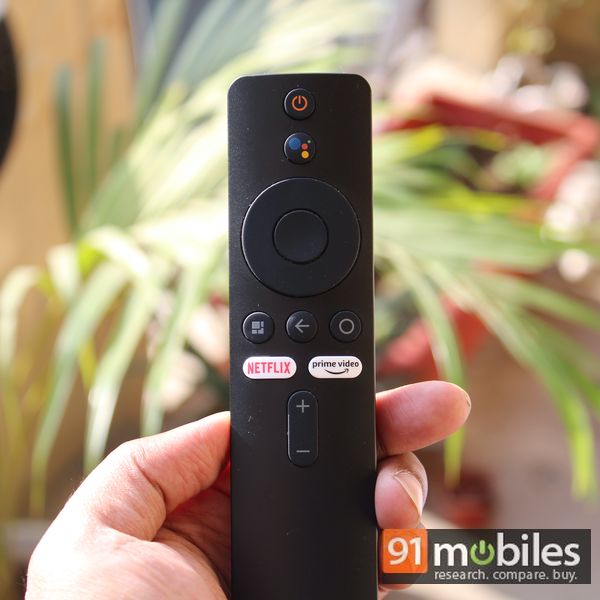
Dolby Vision and Atmos certifications are created to ensure that there is a certain level of colour depth and range of colour tones that a TV’s display is supposed to produce, which matches the benchmark standards set by these companies. Content on streaming platforms are also often produced to these standards, which in turn mean that if your TV supports Dolby Vision, you will be able to see a movie in almost exactly the same colour calibration as the movie’s makers intended you to. This can be a big boost to your overall TV viewing experience.
Choosing OLED/QLED over standard LEDs
In the present TV market, the mainstream televisions all offer LED panels – making the latter the most affordable TV panel standard at the moment. While LED TVs can be great in their own right and offer all of the above mentioned benefits, you may also choose to look at other panel technologies such as QLED or OLED.
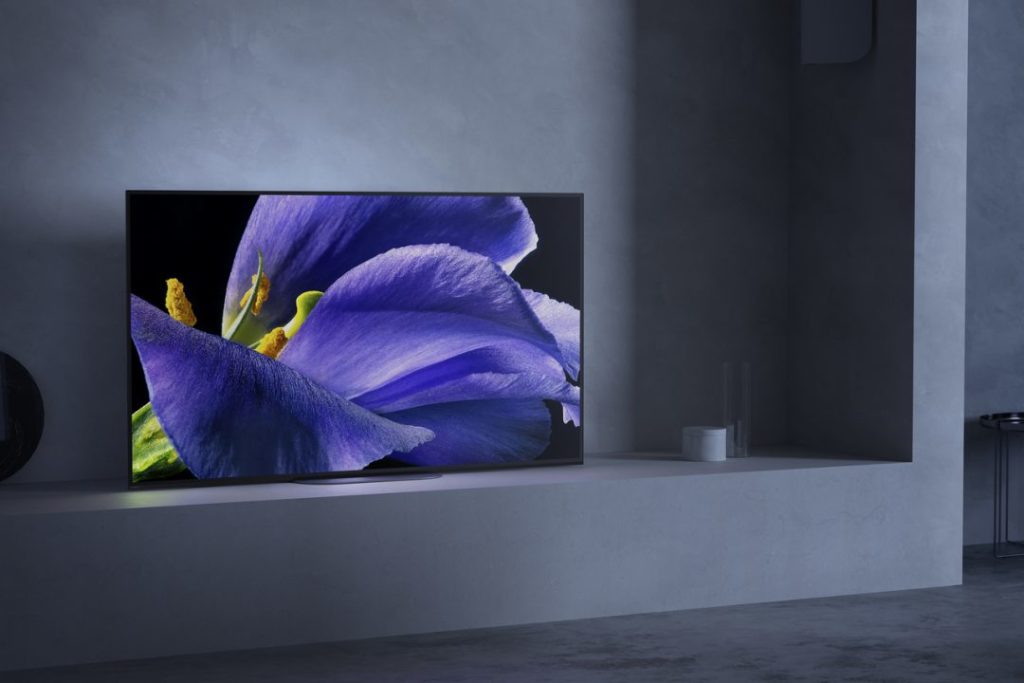
QLED, standing for Quantum Light Emitting Diode, is a relatively newer technology that uses an LCD panel at its base, and the LED backlight behind the base for brightness. On top of this configuration, QLED TVs come with a quantum dot filter layer, which typically enhances the overall colour performance of televisions. This makes sure that the picture quality that a QLED TV produces is more vibrant than a typical LED TV, where the colour information is baked into the LCD layer of the TV.
OLEDs, or Organic Light Emitting Diodes, meanwhile, offer self illuminating pixels with no backlight. As a result, OLED TVs can become significantly dimmer than other panel technologies – which is why you may have heard that OLED TVs are typically excellent at producing very deep blacks and extremely high contrast ratios. In simpler terms, this means that the image you see will look much sharper, and close to actual cinema quality.
However, OLED technologies are typically more expensive, which makes OLED TVs significantly pricier than LEDs and even QLEDs. To choose among the three, take a look at what your budget allows. For most mainstream purposes, an LED TV should be good enough for most users. However, if you require your TV to be brighter (which you would need if your TV viewing room itself is very bright due to sunlight or artificial light), QLEDs are the right choice to make.
Smart controls can make a difference
A lot of TVs today offer smart home hubs, making them multipurpose IoT (internet of things) gadgets. The latter means that with these new TVs, you can actually get a smart home hub through your TV, which would connect to your home wi-fi network, and your primary smart home control centre through Google Assistant or Amazon Alexa. This can then let you control all your smart home things, such as connected smart bulbs and thermostats, through your TV itself.
This can also make sure that all your smart gadgets are connected to one another, including your TV, making all of them into a single, tightly knit connected ecosystem of products. Given that such TVs from the likes of Samsung and Sony are available aplenty, and Alexa and Google Assistant controls for TVs made by the likes of OnePlus are also being baked into the TVs themselves, it would be prudent to buy a TV that does offer such features.
Even if you do not own a smart home setup right now, having the ability and flexibility to do so can let you make the most of connected smart home controls, and make sure that when you do setup a smart home appliance network, you can easily control it all just from within the TVs themselves.
There’s no need for 8K TVs
You may also hear that a new crop of 8K TVs are on their way. In terms of the absolute technology itself, 8K TVs are indeed the future of television, since they offer higher resolution and therefore pack in more pixels per inch of the television. However, it is important to note here that not only are 8K TVs very expensive at the moment, they are also far and few.
The reason behind this is that while 4K content has finally been catching up in terms of giving users plenty of choices for content in 4K resolution, 8K content is nowhere to be found right now. This makes 8K TVs a surplus at the moment, and even in the near or intermediate future, the chances of 8K video content becoming abundant is not immediate.
One of the key reasons behind this is simply the amount of internet bandwidth that would be required to stream content in 8K, which most users even in urban areas do not have. As a result, you can be assured that even if you skip on an 8K TV right now, you will not be missing out on anything – and will not be required to upgrade your TV in the immediate future.
If you do have the budget for an absolute flagship TV, opt for a 4K OLED TV from any brand such as LG or Sony, which would also give you 120Hz refresh rate alongside other perks such as smart home hubs and video quality certifications.
Look for the cleanest software interface
One very important factor to consider in the long run is the kind of software interface that your TV offers. Most TVs in the market today run on Google’s Android TV OS, with the exception of Samsung’s smart TVs running on its own Tizen software, and LG using its own, Linux-based webOS on its TVs.
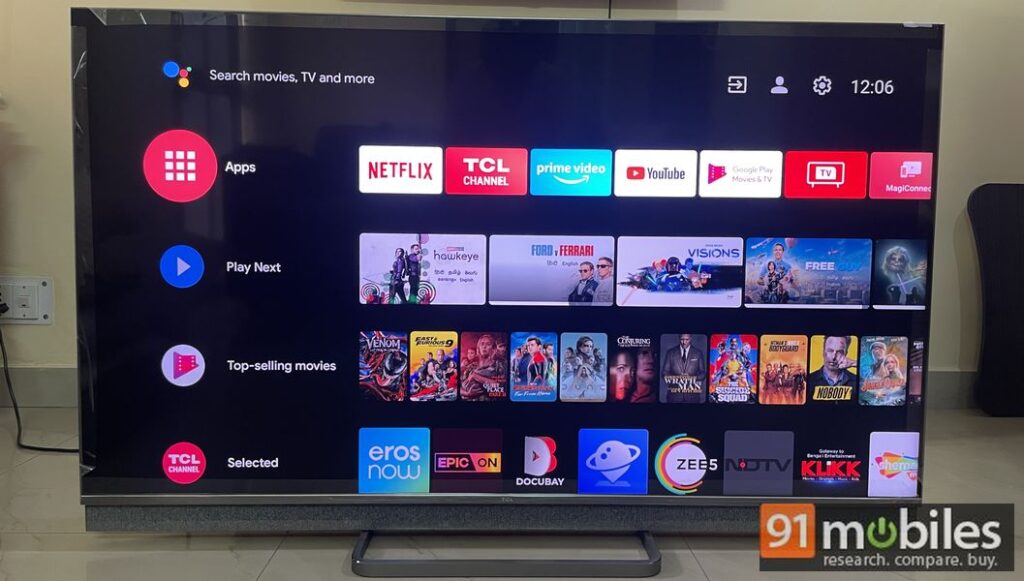
Given that you would be using the TV that you buy for years, it’s important to choose a platform with care. Opting for the right platform makes sure that you get all of the video streaming apps that you would want on your smart TV, while ensuring that you would not need to use a separate streaming stick such as the Amazon Fire Stick to fill up an incomplete repertoire of apps. The Android TV OS, along with Tizen and webOS, all offer most apps that you would want running on your TV – hence covering almost all the grounds that you could want.
Even within Android TV, look for TV options that may offer mild customisations to enhance the user experience, without bloating up your TV interface. The clean Android TV experience is great as well, but very few companies would offer a vanilla Android TV experience without some sort of customisation to differentiate from the competition.
Finally, look at software interfaces that are reliable in terms of updates. The ones mentioned above have developer teams that issue updates regularly to patch security flaws, while keeping the software running smoothly. Having a good software on your TV can eventually make a big difference in how smoothly your TV works – which can make or break the TV usage experience.
Understand the difference between cheap prices vs big brands
The final straw in deciding which TV to buy is to take a call on the brand stature of the TV maker. For instance, the likes of Sony, LG and Samsung enjoy a near-legacy status for being what is commonly referred to as ‘big brands’. While this does come with an overall sense of assurance in terms of product longevity and after-sales services, this also means that you will typically end up spending more on TVs made by these brands. The latter usually charge premiums for this brand appeal.
On the other hand, non-typical TV brands such as Xiaomi and OnePlus offer near-identical TVs and viewing experiences, without breaking the bank. Their products are largely economical, and given that they are established names in the smartphone space, are not entirely unfamiliar brands either. You may also get to choose from even lesser known brands, but our TV buying guide recommendation would be to avoid these brands – purely from an after-sales services perspective.
If you wish to save a few extra bucks in your TV buying process, the likes of Xiaomi and OnePlus strike a good balance between features, quality and brand familiarity, therefore making them the most prudent TVs to buy today. Due to homologation of manufacturing processes, the difference in qualities between these brands and the legacy TV brands is not all too drastic – which means that you can avoid paying a premium for the likes of Sony or LG. Unless, of course, what you’re looking for is an OLED TV.
For all the latest Technology News Click Here
For the latest news and updates, follow us on Google News.
